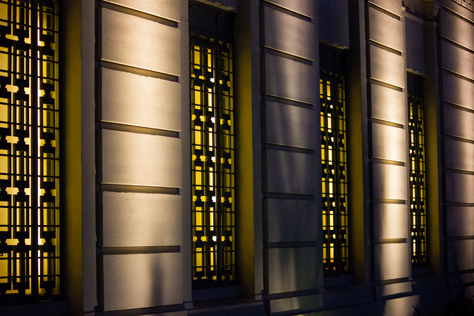
Illuminated wall and windows on the northwest exterior of Griffith Observatory (1935).
2800 East Observatory Avenue, Los Angeles, California: 22 August 2013
part of the Griffith Observatory album

Illuminated wall and windows on the northwest exterior of Griffith Observatory (1935).
2800 East Observatory Avenue, Los Angeles, California: 22 August 2013
part of the Griffith Observatory album

Moon, clouds and airplanes in the sky over eastern Los Angeles County, Pomona and San Bernardino from the Griffith Observatory (1935).
2800 East Observatory Avenue, Los Angeles, California: 22 August 2013
part of the Griffith Observatory album
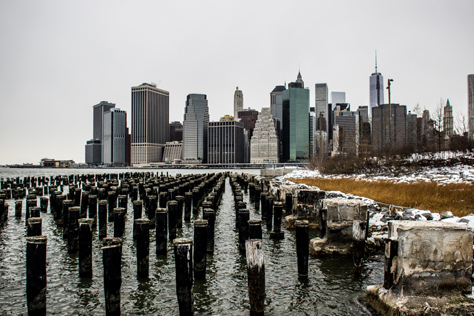
Manhattan's Financial District, centenarian wood pylons in the East River and smooth cordgrass (Spartina alterniflora) from west of the Brooklyn Bridge Park (2010) Pier 1 boat ramp.
Near Furman Street, Brooklyn, New York: 26 January 2014
part of the Brooklyn Bridge Park album
Having discovered photographs and information prior to my trip, I knew that I wanted to stop by Brooklyn Bridge Park while in New York. An eighty-five acre parkland along the East River south and east of the Brooklyn Bridge, the site is a redevelopment of a once-industrial waterfront that dates to 1642.
After checking out two other areas close to the bridge, I made my way to Brooklyn Bridge Park Pier 1. Walking about halfway down the riverside pathway, I found excellent and unobstructed views of Manhattan's Financial District skyscrapers, the Brooklyn waterfront, two bridges and the river itself.

Pier 1 has many features including two open lawns, a playground, small boat ramp and two concession stands that were closed for the season. With nine-and-a-half acres of scenic land, it is the largest of the park's six piers and the only one not pile-supported. Instead, the construction used clean landfill material to achieve a stable foundation for the architected topography.
The landscaped hills' subsurface was created from 40,000 cubic yards of matter excavated during the Long Island Railroad East Side Access MTA project extending LIRR service from Sunnyside Yard in Queens to a new eight track station and concourse 160 feet beneath Grand Central Terminal (1913).
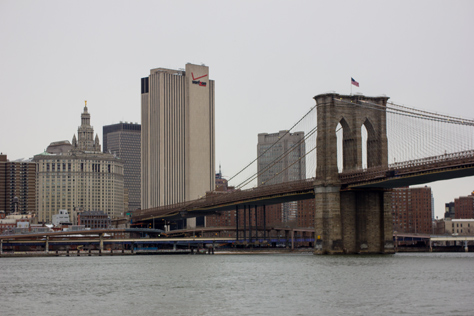
There were few people or wildlife in the area, a fact that I attributed to the cold and overcast day. It was around nineteen degrees and unbeknownst to me, a brief snowstorm would start shortly. I did encounter one Branta bernicla hrota (Pale-bellied Brant Goose) sitting in the snow of the Bridge View Lawn.
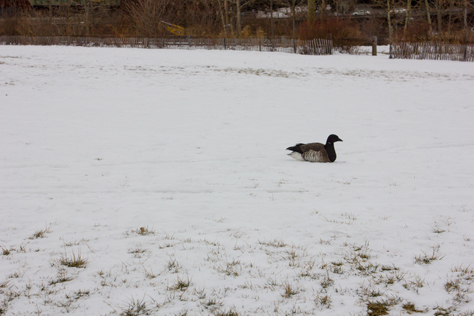
From the southwest corner of Pier 1 there was a direct view of old wood pylons in the water, the park's Pier 2 — slated to open this spring — and the Brooklyn Heights residences disunited from the waterfront by the Brooklyn-Queens Expressway (Interstate 278) in the 1950s.
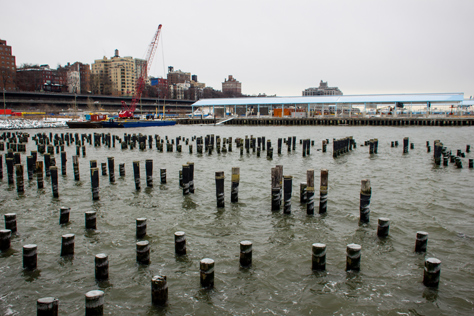
Turning right toward the southwest, I watched two New York Water Taxi ferries navigating toward the Buttermilk Channel. Also visible was the northeastern end of Governors Island, structures at Governors Island National Monument and the Statue of Liberty (1886) beyond the confluence of the East and Hudson Rivers.
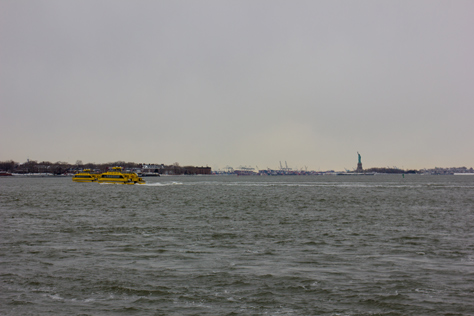
Among the numerous Manhattan skyscrapers in the Financial District across the East River, I have always liked art deco and wedding-cake style 120 Wall Street (1930). Until the end of the 1960s, it stood alone as the only major high-rise building on the East River waterfront in downtown.
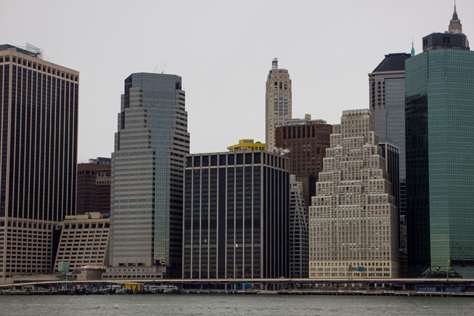
In hindsight, I bet my enjoyment of 120 Wall Street first started due to its resemblance to the film-enhanced version of 55 Central Park West that appears in Ghostbusters (1984). I can remember as a child drawing focused non-terminal repeating phantasms on a coloring book page featuring 120 Wall Street.
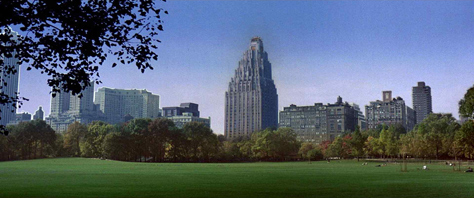
Continuing on a path east around the Harbor View Lawn and down the stairs, you can either take the Greenway running from Pier 1 to Pier 6 and part of the greater Brooklyn Waterfront Greenway or turn sharply right to stay on Pier 1 and approach the native plant salt marsh and boat ramp for unmotorized craft.
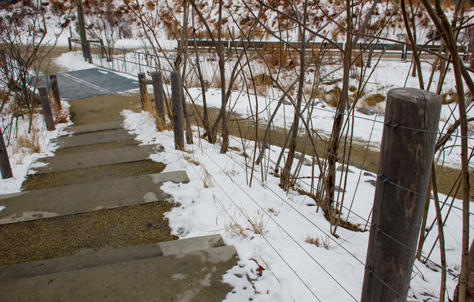
As part of the park's sustainability initiative, granite salvaged from the old Willis Avenue Bridge (1901–2011) is placed around the salt marsh for seating and landscaping. The area is planted with Spartina alterniflora (smooth cordgrass).
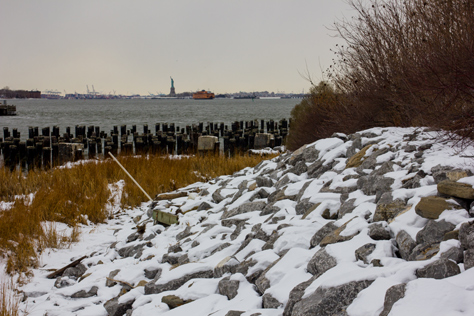
Cautiously proceeding down the snow and ice-covered boat ramp, I took several photographs of Manhattan through the hundreds of centenarian wooden pylons lined up in the East River. Artifacts from the dockside warehouse era past, these pylons were retained during the park's development for their historical significance and visual appeal. They possibly date from the early 1900s or may have been installed during pier construction from 1956 to 1964.

Leaving the boat ramp, I got onto the Greenway and headed north to photograph the Manhattan Bridge from Washington Street and enter the Brooklyn Bridge Promenade south of Prospect Street to walk across the river.
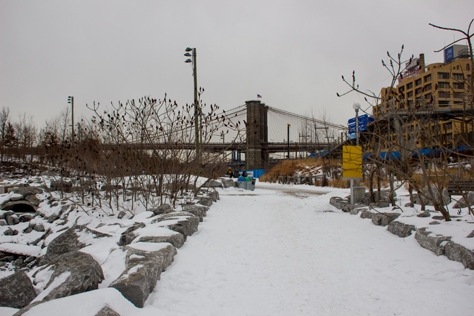
While it may not have been the most photogenic of days, I had a lot of fun exploring the park and believe that my images successfully captured the day's intemperate mood.
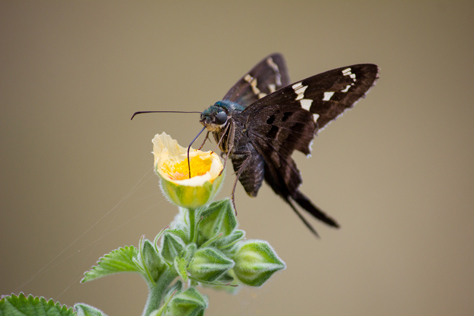
A Long-tailed Skipper (Urbanus proteus) using its proboscis to extract nectar from a flower near the lake along the Gobbler Ridge Trail at Lake Kissimmee State Park.
Near Park Road, Lake Wales, Florida: 13 October 2013
part of the Lake Kissimmee State Park album

A twilight darner dragonfly (Gynacantha nervosa) sitting on a flower next to the Reflection Pool at Bok Tower Gardens (1929).
1151 Tower Boulevard, Lake Wales, Florida: 14 October 2013
part of the Bok Tower Gardens album